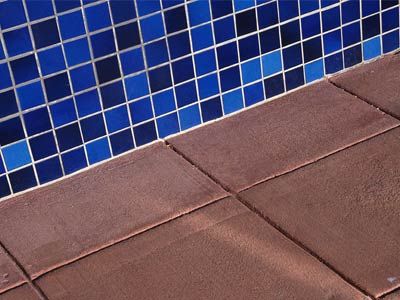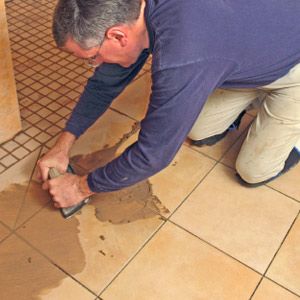When you mix grout, it should between the consistency of sour cream and that of peanut butter. If you mix it with a latex compound instead of with water, it will be more durable [source: essortment.com].
When grouting kitchen tiles, fill the gaps between the tiles with grout, using a foam rubber float held at a 45-degree angle [source: DIYonline.com]. Let the grout set for 15 to 20 minutes and then clean the tiles with a damp sponge or cloth. Smooth the grout to just below the level of the tile. After it's dry, polish the tiles carefully [source: DIYonline.com, essortment.com]. Over the next three days, lightly mist the grout so it doesn't become brittle and crack. Then apply a grout sealer.
Advertisement
Wait two to three days for the mortar to dry before grouting a new tile floor. Mix small batches of grout because it will stiffen quickly. Work from the corner of the room to the center. Spread grout onto the tile and scrape it into joints using a squeegee or float. Then wipe off the tile. Wait 15 to 20 minutes before cleaning the floor. Refresh the water so it's always clean [source: Findanyfloor.com].
Epoxy grout is strong and long-lasting (and expensive), but it can't withstand extreme temperatures [source: Kolle]. It's usually used in commercial and industrial situations, especially in places where it might be exposed to acids or grease. Epoxy works well only for thin tiles (less than half an inch or 1.3 centimeters thick) with grout joints larger than a quarter-inch (0.6 centimeters) [source: Online Tips.org].
Acrylic grout has better adhesion quality than epoxy. It remains stable despite the weather so it's good for decks and garages, and it's easy to get into small joints without covering the entire tile [source: Keilholz]. Acrylic grout is good for repairs and for tiles like marble, which you don't want to scratch, because it contains no sand.
Advertisement

